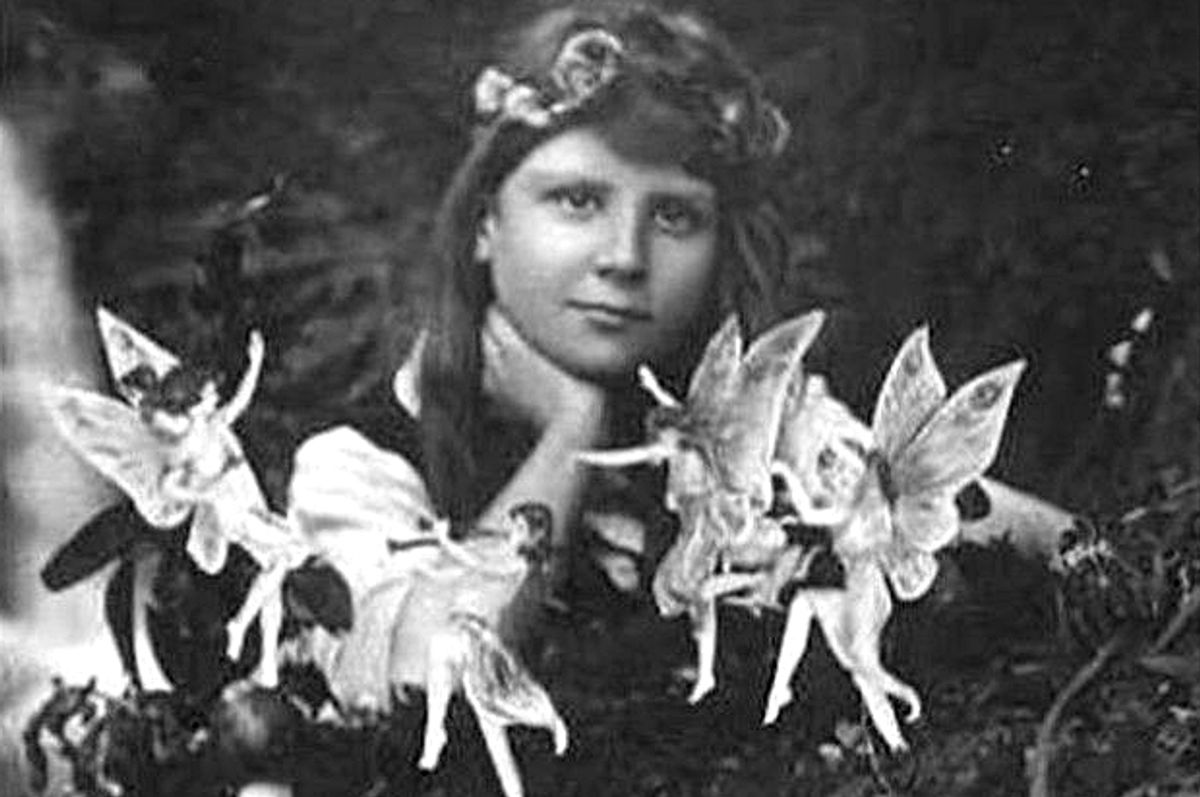Fake news is big news right now. According to certain people, you can’t believe anything you read in the newspapers. However, this certainly isn’t the first time in history the media has been accused of sharing a story that may (or may not) be true.
Take, for example, the extraordinary story of the Cottingley Fairies, which hit the headlines of British newspapers a century ago. "Real fairies photographed," claimed the reports, and who could doubt it when there was actual photographic evidence. The camera doesn’t lie, right? Or at least it didn’t in the early 1900s when photography was still relatively new. So if the camera doesn’t lie, the images of the little girls with the fairies had to be true. Didn’t it?
Not necessarily.
In the latter years of the First World War, two young cousins, Frances Griffiths and Elsie Wright, from a quiet Yorkshire village of Cottingley in England, told their parents they had taken photographs of real fairies at the stream at the bottom of the garden where they played. In truth, these "fairies" were illustrations drawn by the eldest cousin, Elsie, and stuck into the ground with hatpins to give the illusion that the fairies were "alive." Nine-year-old Frances had been repeatedly scolded by her mother for falling into the stream. The claim that she was playing with fairies was an attempt to get her out of trouble. However, what started as a practical joke between cousins, quickly escalated into a national and international sensation that would last a lifetime, and still fascinates us one hundred years after the first "fairy" photographs were taken.
The photographs — only ever intended to be shown to the girls’ parents — soon came to the attention of novelist and occultist Sir Arthur Conan Doyle. Conan Doyle was a leading figure in the Theosophical Society in London. He called on experts to examine the photographs, who declared them to be entirely authentic (much to the girls’ astonishment). In November 1921, when Conan Doyle’s Strand magazine article — featuring Frances and Elsie’s photographs — hit newsstands, the story of the "Cottingley Fairies" grew wings, and soon the girls, and their remarkable photographs, were known around the world. Some always suspected the girls of fakery, but nobody could quite work out how they had done it, and the vast majority believed the fairies to be real. This real life fairy tale endured for decades until a confession finally came in the 1980s.
Growing up in Yorkshire in the 1970s and 1980s, I was aware of the photographs of the famous "Yorkshire fairies," and as an adult I’ve often wondered how a nation could have been so easily swayed by images, which now look so clearly faked. Perhaps one of the most compelling reasons for the fake fairies being so readily accepted is the fact that the images came to light during a time of great national turmoil, shortly after the end of WWI. At a time when so many had lost so much, it isn’t that hard to understand why something as wonderful as fairies would enchant the public and provide something uplifting for people to cling to after the devastation of war. Many people at the time also found something quite magical and mystical about the process of capturing an image on film. Perhaps it was harder to accept that cameras could lie than it was to accept that fairies were real.
However, unlike the "fake news" claims of today, there was no malice at all in Frances and Elsie’s photographs. There was no intent to trick a nation, or the world. This was simply a joke between family members that got out of hand. No wonder the girls didn’t confess for over 60 years. How could they, when so many kept reasserting that the images were genuine? What a responsibility it would be to shatter all those hopes and admit the photographs were fake. And yet, not all the photographs were.
The fifth photograph is still a source of much speculation. To her dying day, Frances claimed that this photograph wasn’t staged like the others, and that it really did show actual fairies. Frances maintained that she often saw real fairies as a young girl in Cottingley, and throughout the rest of her life. Family members still hope the fifth photograph will be examined with modern technology to settle the matter once and for all. Perhaps there is an element of truth to every bit of "fake" news. Sometimes we have to look a little closer, look behind the picture, to discover the real story.
Not all news stories can be believed, but perhaps the real magic of this particular piece of fake news is in the power of wonder and imagination. Without intending to be anything other than a prank to get a young girl out of trouble with her mother, the Cottingley Fairy photographs became a symbol of hope to so many, and although we know how that particular story ends, there is still an inherent fascination with fairies within many of us. As I suggest in my novel "The Cottingley Secret," the possibility and childlike hope that fairies might be real is perhaps more important than discovering the truth.
In such politically troubled times as those we are living through now, many of us are turning away from reality and seeking escape in fiction and art. When the world is so full of bad and "fake" news, it is little wonder that we seek out things that offer something far gentler, and more magical. To quote a newspaper report from 1920 when the Cottingley Fairy photographs first became public: “The soul of the fairy is its evanescence. Its charm is the eternal doubt, rose-tinted with the shadow of hope. But the thrill is all in ourselves.”

Shares